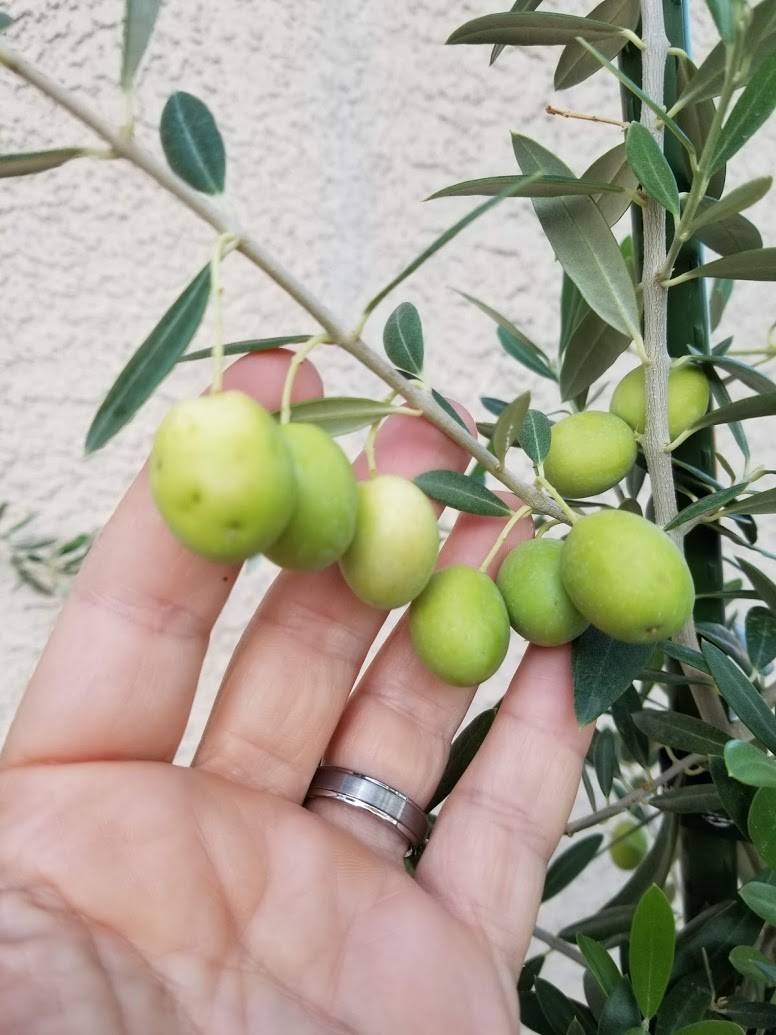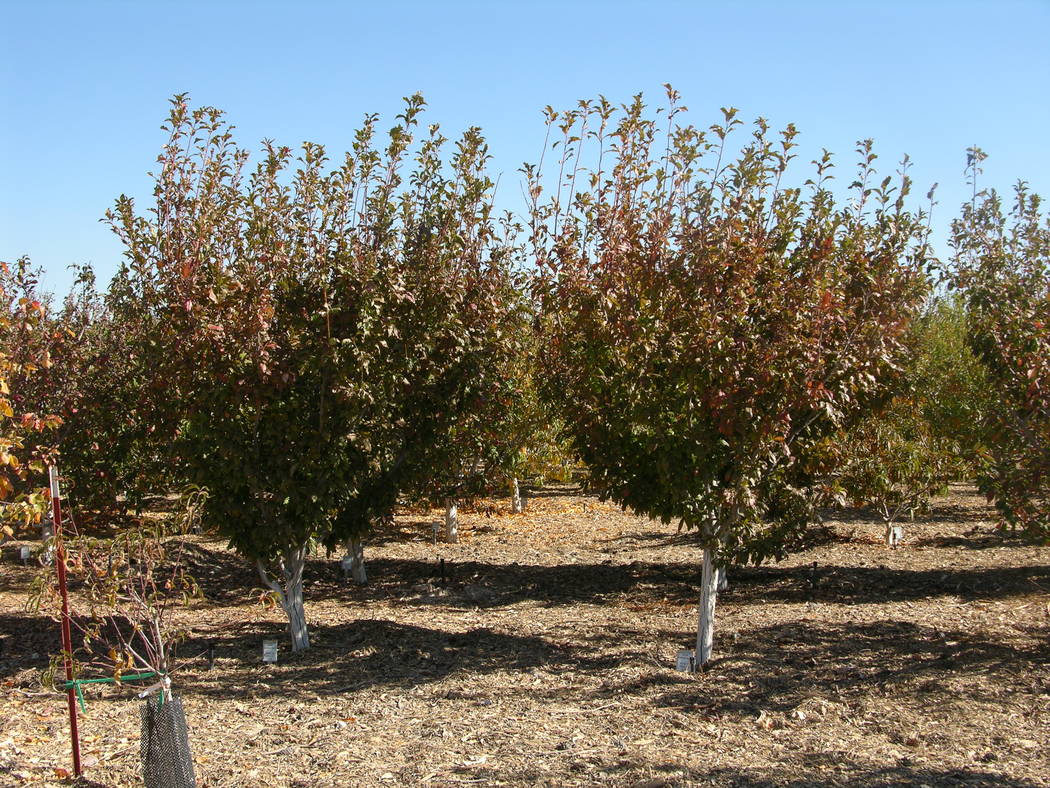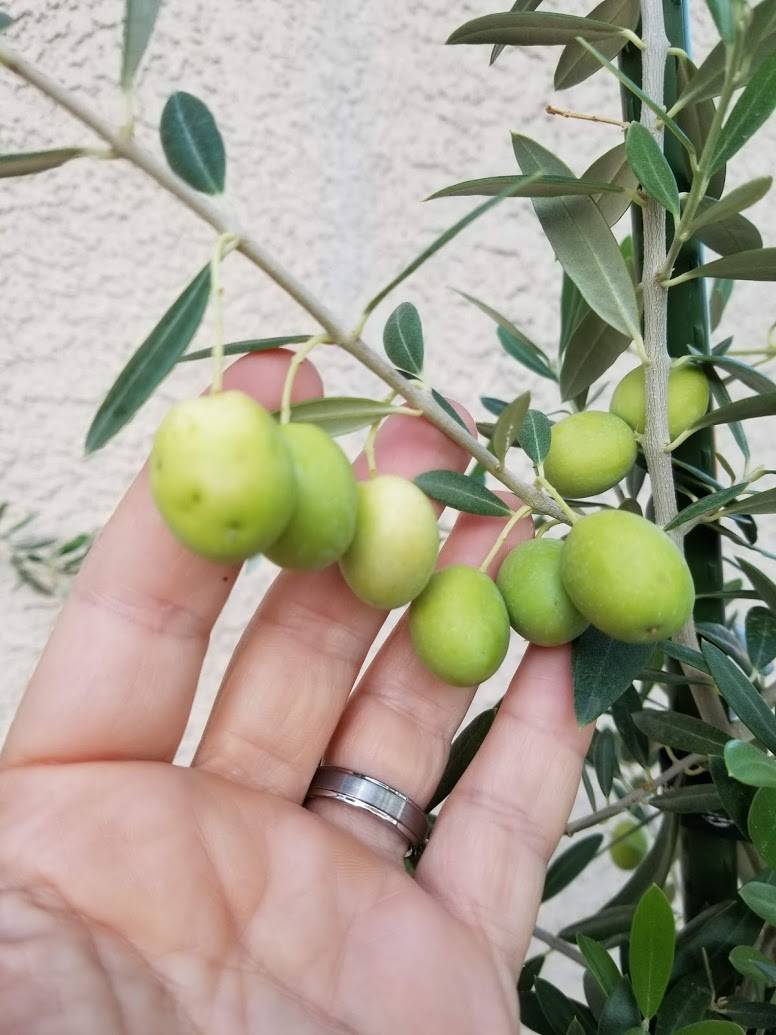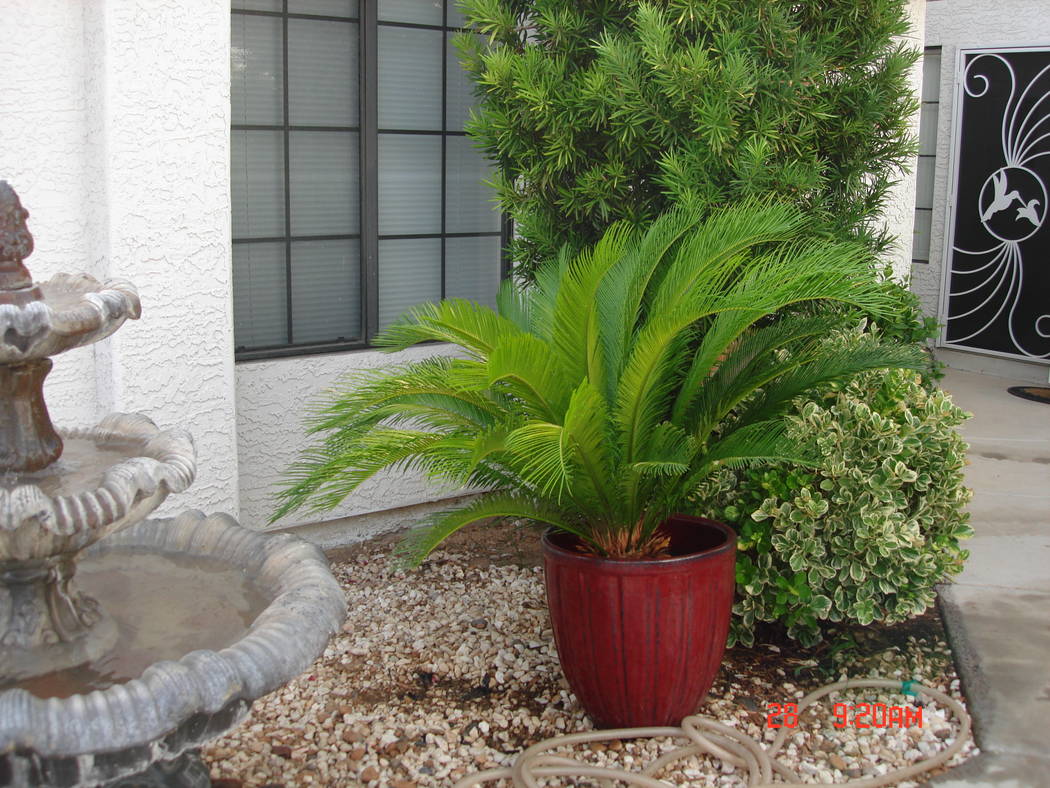Most fruit trees are pruned during winter months
Q. When is the best time to prune fruit trees? I would like to start pruning as soon as possible.
A. The time of pruning varies with the fruit tree but generally most fruit trees are pruned during the winter months, beginning at leaf drop. When you have a lot of fruit trees, pruning may start early and not end until after flowering has started in spring.
I have the water turned off to the fruit trees I am managing so they drop their leaves earlier. But the irrigations must be started again soon after a brief period of stress that cause the leaves to drop.
If citrus is on the agenda, it is pruned after harvest, so pruning doesn’t interfere with harvesting, flowering and fruit production. Peaches, pears, apricots, apples and others that finished their fruiting earlier in the year are pruned during the winter months. Trees that might freeze during the winter are pruned when most of the coldest weather has passed.
Some trees are helped by a lesser known second pruning, a misnomer called summer pruning, sometime during early summer months. This pruning only removes undesirable new growth that can cause problems later in the year. This second pruning helps keep the trees smaller, takes away some of their vigor and reduces the amount of pruning needed during the winter.
Classes on pruning fruit trees are offered at the Orchard at Ahern in downtown Las Vegas Friday afternoons and Saturday mornings during December. Sign up for these classes on Eventbrite or contact me directly.
Q. I need to move a 2-year-old citrus tree to a better location. Can I do this now?
A. Yes, this is a great time to move a fruit tree, but do it soon. A 2-year-old tree should move easily if you do two things: Take as much soil with it as possible and prune it back during the move. After three years in the ground, trees this old are more touch and go and require more specialized care. Now or in the early spring are the best times to move it but don’t wait any longer than this.
Dig its new hole for planting ahead of time. Make it 4 feet wide and about 18 inches deep. No deeper. The soil at the bottom of the hole should be firm before planting, not soft. This helps prevent it from “sinking” in the hole after the move. Add about 50 percent rich compost to the backfill and use this mixture to fill the hole around tree roots when planting.
Use a sharp shovel when cutting tree roots and removing the tree from the ground. Slice into the soil around the tree 18 inches from the trunk. Slice the soil at least twice around the tree until it can be leveraged from the hole using the shovel. Don’t lift the tree by its trunk.
Moving a tree to a new location will leave most of its established roots behind.
Compensate for this root loss by removing about one third of the trees canopy. Remove entire branches rather than shearing the canopy.
Move it by supporting the excavated tree from the bottom, not by the trunk. Place it into the new hole and orient it the same direction as before; the north side of the tree facing north.
Immediately add water to the hole and, at the same time, fill the hole with amended soil around the roots. The new soil should form a slurry around tree roots causing it to fill the air gaps around roots. Look for air bubbles coming from the slurry. Plant the tree at the same depth as it was before. If done correctly, it should not need staking.
Water this new planting with a hose three times over the next three days before turning it over to the irrigation system.
Q. I started a fruitless olive tree from cuttings but after four years it produced lots of olives! I got these cuttings from a local tree labeled as a fruitless olive. A gardener told me that fruitless olive trees can revert to a fruiting olive. How is this possible?
A. For a fruitless olive to revert to an olive that produces fruit would be a rarity and highly unlikely. This would require a mutation or what is called in horticulture a “bud sport.”
Fruitless olive is grafted to a normal, fruit-bearing olive rootstock when very small. This rootstock is an olive tree that produces olives if allowed to grow. If your cuttings were taken from suckers growing from the rootstock, then your cuttings will produce olives and will not be fruitless.
Fruitless olive trees sometimes die back to their rootstocks. This can happen at the nursery or in the landscape after it is planted. A new tree begins growing from the established rootstock, a sucker, very rapidly because the roots are fully established. The tree that develops from the root sucker won’t produce olives for a few years. It will appear “fruitless” because it is young.
Cuttings are usually taken in the early spring when no flowers or fruit is present. If you are told, or look at a sign, you might think it is fruitless when it’s not. But old fruit lying on the ground might tell you otherwise.
Q. We have a small paved area in front that looks a bit bare and we figured containers are a good way to go to add some texture and color to this barren cement landscape. It gets afternoon sun. Can you give us some tips since we are new to the desert?
A. Western or afternoon exposure to the sun is tough on container plants. Eastern or morning exposure is better. I surge you to plant in double containers; the outer container shades the inner container full of soil and plant roots. In the summer months, direct sunlight on the surface of containers produce temperatures above 160° F on the side facing the sun. These high temperatures transfer to the soil inside the container. High soil temperatures will kill the roots of plants growing on the side facing the sun. Essentially, plants will be forced to survive on half of its roots.
Use the same soil in all the containers. This will make it easier to water. This soil should easily drain after watering. Avoid using garden soil in containers. It’s too “heavy.” Also avoid using houseplant soil. It’s too “light.” Container soil should be somewhere between. Containers should be filled consistently to within 1 inch of their top. Soil in containers should be amended or totally changed every three to five years.
Unless you want to water plants differently from each other, select plants of a similar type and size so they can be watered at the same time. Desert plants are watered differently from nondesert plants. They are watered less often. Annual flowers and vegetables are watered more often than ornamental woody plants because they have shallower roots. Never mix these three types of plants in the same container or you will have problems.
Schedule irrigations before the sun heats up the containers. Wet soil is slower to heat up than dry soil. Follow-up irrigations are variable because their schedule depend on the size of the container, the soil inside the container and the type and size of the plant. Water must drain from the container easily after an irrigation.
Schedule follow-up irrigations when soil moisture is about 60 percent of its total capacity. I know 60 percent doesn’t tell you much unless you have a soil moisture sensor. So, use an inexpensive soil moisture meter to judge when to apply the next irrigation until you get the hang of it. When the meter reads “6” and the sensor is where the roots are, it’s time to irrigate again.



























